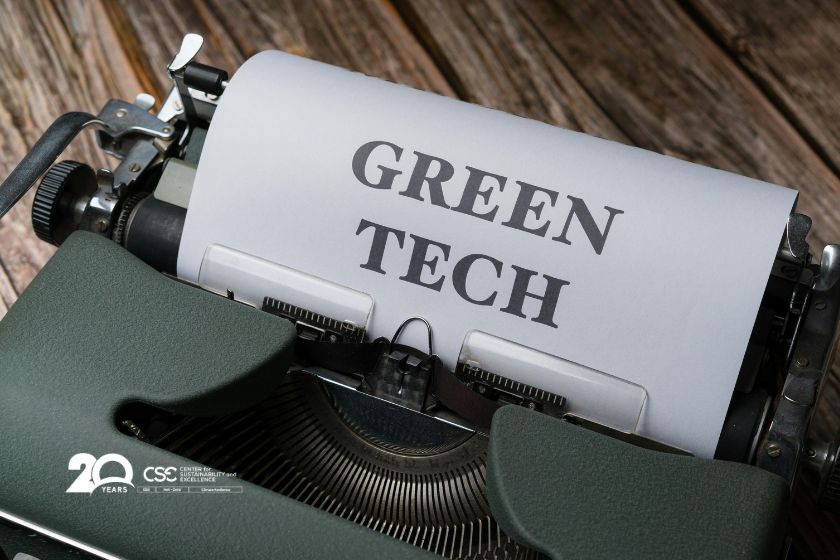Europe was once the global frontrunner in clean energy innovation, leading in offshore wind, heat pumps, and sustainable manufacturing. But today, it faces intensifying global competition — particularly from China and the U.S., which are leveraging massive industrial policies and green subsidies.
According to the International Energy Agency (IEA), China controls over 60% of global clean energy manufacturing capacity, thanks to aggressive subsidies and domestic scaling. Meanwhile, the U.S. is mobilizing nearly $370 billion in clean energy incentives through the Inflation Reduction Act (IRA).
If Europe doesn’t act swiftly, it risks falling behind in an industry that is critical not just for climate goals, but for energy sovereignty, economic growth, and industrial competitiveness.
A New 2040 Ambition: 90% Emissions Reduction
Momentum is building across the private sector. In October 2025, a coalition of 131 companies, investors, and trade organizations, coordinated by Corporate Leaders Groups Europe (CLG Europe), urged the EU to set a 90% emissions reduction target by 2040.
Their letter to EU leaders calls for:
- A net 90% cut in emissions by 2040,
- A Clean Industrial Pact to simplify green investments and eliminate red tape,
- And the creation of lead markets for low-carbon products through clear regulations and tax incentives.
According to European Commission estimates, achieving this goal would require:
- Doubling annual renewable installations (currently at 56 GW in 2024),
- Tripling energy storage capacity by 2040,
- And €1.5 trillion in additional investment for electrical grids, smart systems, and clean tech production.
As Ursula Woodburn, CLG Europe Director, emphasized:
“Businesses and investors strongly support an effective Clean Industrial Deal, now is the time to turn intentions into actions that strengthen Europe’s industrial advantage.”
Why Green Tech Leadership Matters for Europe
- Economic Growth and Skilled Jobs
The EU could generate over 2 million green jobs by 2030 if it expands its clean manufacturing base. Green clusters in Sweden, Germany, and Romania are already attracting international investment and building future-proof industries.
- Energy Security
The war in Ukraine exposed Europe’s dependence on imported fossil fuels. Scaling domestic renewables and grid infrastructure is key to achieving true energy independence.
- Global Market Access
Europe’s engineering excellence and sustainability standards are assets in emerging markets across Africa, Asia, and Latin America, where demand for clean technology is booming.
- Climate and Environmental Resilience
Decarbonizing heavy industries like steel, cement, and chemicals supports the EU’s Fit for 55 and Net-Zero 2050 targets, while enhancing air quality and public health.
- Social and Regional Stability
Just transition policies, especially in coal-dependent regions like Poland and Romania, can ensure the benefits of the green transition are widely shared.
5 Key Strategies to Stay Ahead in the Green Tech Race
- Expand and Simplify Access to Green Funding
Europe must scale up and simplify access to funds like the Innovation Fund, Just Transition Fund, and the upcoming EU Sovereignty Fund.
Example: €40 billion is earmarked for clean industry projects between 2025–2030, but SMEs struggle with administrative complexity.
Policy Suggestion: Create a single digital application portal and technical assistance hubs for smaller firms.
- Upgrade Energy Grids and Infrastructure
Without modernized grids, renewables can’t scale. Investment must prioritize:
- Smart grids
- Battery storage
- Cross-border interconnectors
Case Study: The Germany–Denmark “Energy Islands” project links offshore wind to multiple countries, cutting costs and improving resilience.
- Ensure Long-Term Regulatory Stability
Businesses need policy clarity to invest with confidence.
- Maintain a predictable EU ETS
- Avoid delaying the phase-out of free allowances
- Enforce binding green procurement targets
- Invest in R&D, Skills, and Industrial Collaboration
Europe must close the innovation gap by funding applied research, university–industry partnerships, and worker retraining.
Currently, the EU invests just 2.3% of GDP in R&D — behind the U.S. and South Korea.
- Promote Regional Equity in Green Investments
Subsidies must be distributed fairly, not concentrated in wealthy Member States.
- Allocate by regional potential, not GDP
- Use Just Transition Mechanisms for lagging areas
- Monitor for transparency and inclusion
Case Study: In Rybnik, Poland, EU transition funds are transforming a former coal hub into a hydrogen innovation center.
Mistakes Europe Must Avoid
- Over-Regulation Without Capital: Mandates without financing create compliance fatigue.
- Unequal Fund Distribution: In 2024, 80% of state aid went to just four countries, deepening divides.
- Policy Volatility: Constant rule changes discourage private investment and delay decarbonization.
Real-World Green Innovation in Action
🔹 Sweden (Boden): SSAB and Stegra are building Europe’s first hydrogen-based steel plant.
🔹 Poland (Rybnik): A coal city becomes a clean-tech cluster focused on hydrogen and renewables.
🔹 Romania (Cluj-Napoca): Tech startups are digitizing emissions data with EU-supported research.
These projects prove that stable policies + targeted investment = competitive green ecosystems.
Frequently Asked Questions (FAQs)
What is the “Green Tech Race”?
It’s the global race to develop and export clean technologies, from hydrogen and solar to EVs, that underpin a climate-neutral economy.
How long does it take to build a competitive green tech sector?
Typically 5–10 years of consistent funding and stable policy frameworks.
Is green tech economically viable for Europe?
Yes. A strong green industry base boosts energy security, job creation, and economic resilience, a triple win for Europe.
Want to Lead Europe’s Green Transition?
Enroll in the Europe | Certified Sustainability (ESG) Practitioner Program – Advanced Edition 2025
Dates: November 27–28 & December 1, 2025 (Live Sessions)
Organized by: Center for Sustainability & Excellence (CSE)
This acclaimed certification equips professionals with practical ESG tools and frameworks (UK SRS, CSRD, ESRS, SFDR) to design measurable sustainability strategies aligned with the EU’s 2040 climate ambitions.
Register here or reach us at marketing@cse-net.org for more information and group discounts.
Europe has the talent, technology, and vision to lead the global green tech race, but leadership now depends on speed, coordination, and unwavering ambition.
The next decade will determine whether Europe becomes a climate innovator or a spectator in the new industrial revolution.







